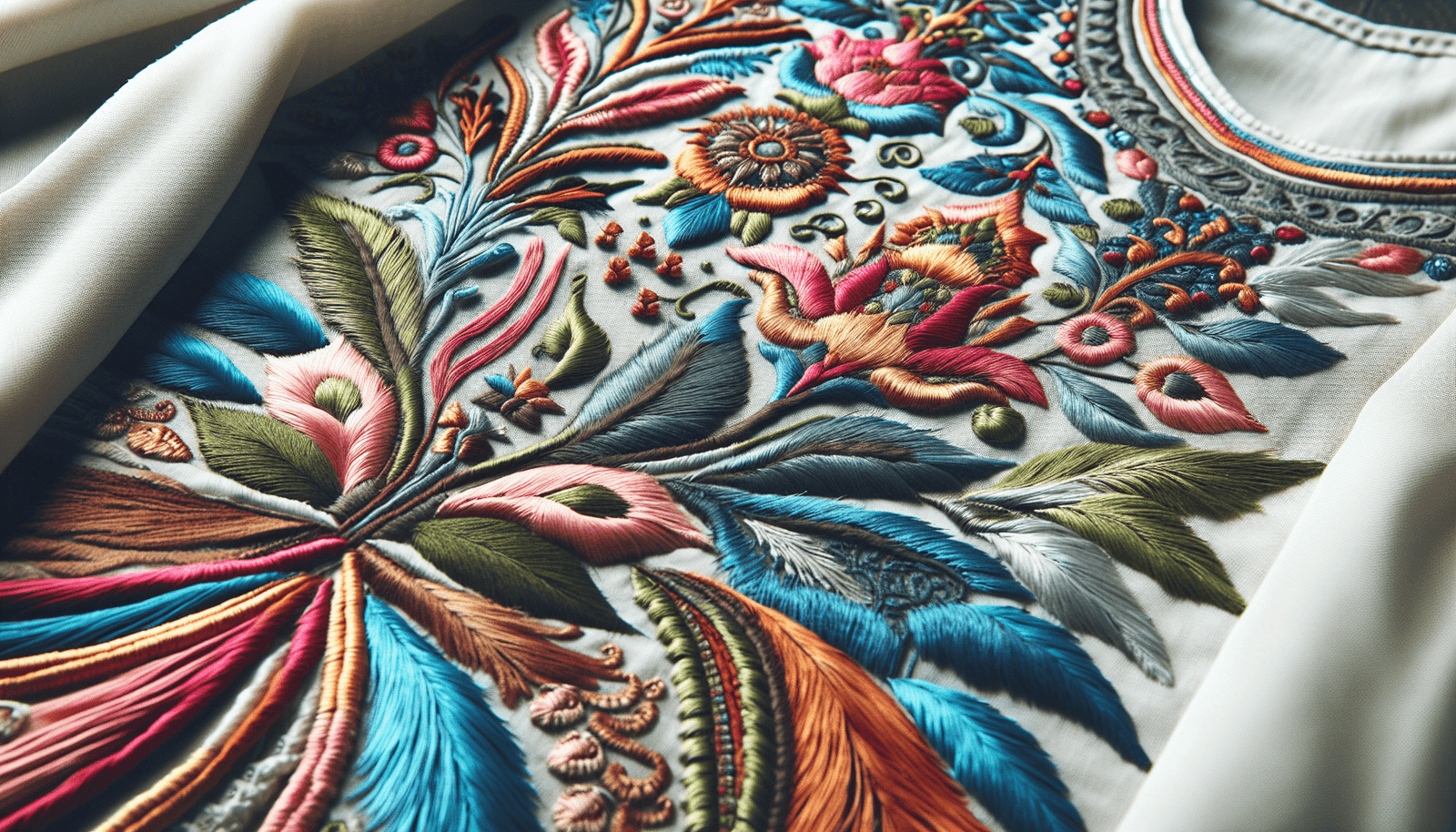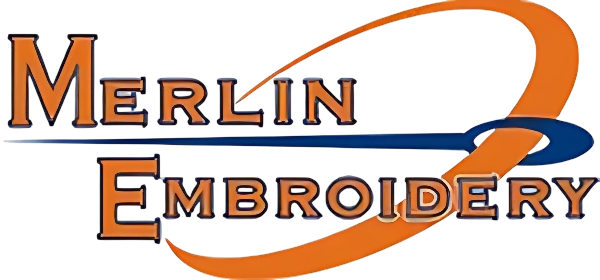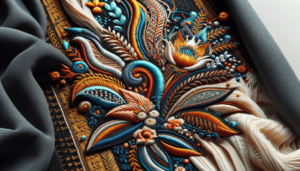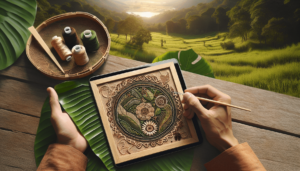How Embroidery Is Influencing Modern Apparel Design
Have you ever wondered how traditional crafts find their way into contemporary fashion? Embroidery, an age-old technique often associated with grandma’s handkerchiefs or ethnic garments, has made a grand re-entry into the fashion scene. It’s nowhere near outdated; in fact, it’s setting new trends and elevating modern apparel design. Let’s take a deep dive into how embroidery is influencing modern apparel design today.

The Resurgence of Embroidery
Embroidery has been part of human culture for centuries, showing up in everything from ancient Chinese robes to European tapestries. But why the sudden resurgence? Well, it boils down to a few key elements – nostalgia, craftsmanship, and the quest for uniqueness.
Nostalgia: A Love for the Past
Today’s consumers often crave the authenticity of the past. Items that carry a historical or nostalgic vibe are incredibly appealing. Embroidery, with its long history, offers exactly that. A beautifully embroidered garment doesn’t just look unique; it also feels rich in history. This is especially true for younger generations who are looking for something that stands out from mass-produced items.
Craftsmanship: The Beauty of Handcrafted Art
In a world increasingly dominated by machine-made and digital items, the beauty of handcrafted art is more appreciated than ever. The meticulous nature of embroidery—from selecting threads to making each stitch—highlights a level of craftsmanship that sets it apart. This meticulous artistry speaks volumes about the quality and effort that goes into each piece.
Uniqueness: Making a Statement
In today’s fashion landscape, standing out is key. Whether it’s through a bespoke item or a limited-edition piece, consumers love the sense of exclusivity. Embroidery offers unique patterns and designs that can’t be mass-produced, making every embroidered piece slightly different and highly desirable.
Types of Modern Embroidery
Embroidery today is not limited to traditional styles. Fashion designers are experimenting with various methods to incorporate this old-school technique into modern wear.
Hand Embroidery vs. Machine Embroidery
First off, you have to understand the basic categories: hand embroidery and machine embroidery. Hand embroidery offers that personal, artisanal touch. While it is time-consuming, the result is often stunning. Machine embroidery, on the other hand, is faster but can still provide intricate designs that are hard to distinguish from handmade ones.
| Type | Pros | Cons |
|---|---|---|
| Hand Embroidery | Unique, artisanal, intricate | Time-consuming, cost may be higher |
| Machine Embroidery | Fast, efficient, highly detailed designs possible | May lack the artisan quality |
3D Embroidery
3D embroidery uses foam or thick threads to create a raised design on the fabric. This kind of embroidery is often used in athleisure wear and accessories like caps and bags. The raised texture adds another layer of depth and interest.
Appliqué
This technique involves attaching pieces of fabric onto a larger piece to create a design. Appliqué is incredibly versatile and can be used for bold, graphic statements. It adds dimension and texture to garments, turning simple pieces into standout items.
Digital Embroidery
Technology has also entered the embroidery space, bringing digital designs to the forefront. Use of computer software to create patterns allows for an incredible level of precision. Digital embroidery makes it easy to produce intricate designs quickly, offering both artistry and efficiency.
Embroidery in Modern Trends
Today’s fashion trends are seeing a heavy influence of embroidery. Designers are incorporating this ancient technique into everything from haute couture to streetwear.
Haute Couture
High fashion has always been about pushing boundaries and creating something extraordinary. Designers like Valentino, Oscar de la Renta, and Dolce & Gabbana have included embroidery in their collections, creating stunning pieces that combine modern styles with traditional techniques. Whether it’s a fully embroidered gown or a subtle detail on a sleeve, haute couture uses embroidery to elevate luxury.
Streetwear
Even streetwear, which values practicality and urban aesthetics, has embraced embroidery. Brands like Supreme and Off-White have released embroidered hoodies, caps, and sneakers, proving that embroidery isn’t just for formal wear. The mix of street-style and handcrafted detailing offers a fresh, modern look.
Fast Fashion
Fast fashion brands such as Zara and H&M have also jumped on the embroidery trend. While fast fashion is usually about mass production, the inclusion of embroidered pieces helps these brands appeal to consumers looking for that ‘extra something’. It allows them to produce trendy items that feel a bit more special.

Sustainable Fashion and Embroidery
You might notice that sustainability is becoming a massive concern in the fashion industry. Here’s where embroidery can play a role too.
Longevity
Embroidered items are typically high-quality and long-lasting. The effort and craftsmanship that go into making them mean they aren’t the kind of pieces you wear once and discard. Instead, they become cherished items in your wardrobe, contributing to a more sustainable way of living.
Upcycling and Customization
Embroidery offers great opportunities for upcycling old clothes. Adding a unique design can breathe new life into an old garment. This not only helps the environment by reducing waste but also allows for more personalized fashion. You can take an old denim jacket and turn it into a one-of-a-kind statement piece with some creative embroidery.
DIY and the Rise of Embroidery Kits
You don’t have to be a fashion designer to enjoy the benefits of embroidery. DIY culture has embraced this technique wholeheartedly, giving rise to a market for embroidery kits.
What’s in a Kit?
Typical embroidery kits come with everything you need to start a project – embroidery hoops, needles, threads, and pattern guides. These kits make it accessible for anyone to try their hand at this ancient craft.
Why Go DIY?
Engaging in DIY embroidery allows you to create something truly unique. Whether it’s a monogram on a shirt, a floral pattern on a tote bag, or an intricate design on a cushion cover, the possibilities are endless. Plus, it offers the satisfaction of crafting something with your own hands.
Common Embroidery Stitches and Their Modern Use
For those of you who are a bit curious about the nitty-gritty, understanding common embroidery stitches can give you an even greater appreciation for the craft.
Running Stitch
This is the simplest form of embroidery and is often used for outlining shapes. It’s incredibly versatile and can be used to add subtle details to modern garments.
Satin Stitch
Filling in areas with a smooth finish, the satin stitch is perfect for creating bold, solid motifs. Designers love using this stitch for logos and other noticeable designs.
Chain Stitch
The chain stitch, known for its interlocking loop appearance, adds texture and whimsy to any design. It’s popular in both traditional and contemporary applications.
French Knot
These small, raised knots add a three-dimensional aspect to embroidery. They’re perfect for adding intricate details and are often seen in modern floral patterns or dotted designs.
Technology’s Role in Modern Embroidery
Technology has had a significant impact on how embroidery is designed and produced today. The advent of digital embroidery software and advanced machinery has opened up new possibilities.
Design Software
Modern embroidery design often starts with specialized software that allows designers to create intricate patterns. These programs offer a level of precision and detail that was once unimaginable, enabling even the most complex designs to be executed flawlessly.
Advanced Machinery
Once the design is finalized, advanced embroidery machines can bring these digital patterns to life. These machines can produce consistent, high-quality embroidery at a much faster rate than traditional methods. They also enable more complex designs to be achieved, combining different stitches and techniques in ways that hand embroidery could never accomplish.
Embroidery in Accessories
Apparel isn’t the only realm where embroidery is making waves. Accessories, too, have seen a massive influx of embroidered designs.
Bags and Purses
From high-end designer bags to everyday totes, embroidery adds a touch of luxury and individuality. Floral designs, abstract patterns, and even monograms can make a simple bag stand out.
Shoes
Did you ever think embroidery would make its way to footwear? Well, it has, and it looks fabulous. From embroidered sneakers to lavishly detailed boots, this technique is giving footwear a whole new dimension.
Hats and Caps
Hats are another accessory that has embraced embroidery. Whether it’s a logo on a baseball cap or intricate patterns on a wide-brimmed hat, embroidery adds both texture and visual appeal.
The Future of Embroidery in Fashion
So, what’s next for embroidery in the fashion world? One thing’s for sure: it’s not going anywhere.
Sustainable Innovations
As sustainability becomes more critical, expect to see more innovation in how embroidery is used. New eco-friendly threads and dyes are already in development, helping to reduce the environmental impact of embroidered garments.
Virtual and Augmented Reality
Believe it or not, technology may soon allow you to “try before you buy” when it comes to embroidered items. Virtual and augmented reality can enable you to see how an embroidered design will look on a particular garment before it’s even created.
Collaborative and Interactive Designs
Crowdsourced fabric designs could become a thing, where consumers get a say in what gets produced. This interaction would not only make fashion more democratic but also ensure that the final products are truly what the consumer desires.
Wearable Tech
With wearable technology on the rise, don’t be surprised to see embroidery incorporated into smart clothing. Imagine a jacket with embroidered elements that light up or change color based on your mood or environment.
Conclusion
Embroidery has seamlessly woven itself into the fabric of modern apparel design, influencing trends, sustainability, and even incorporating advanced technology. The resurgence of this age-old craft speaks to our appreciation for history, craftsmanship, and unique, high-quality items. Whether in the form of haute couture, streetwear, or DIY projects, embroidery continues to make its mark, offering endless opportunities for creativity and personal expression. So, whether you’re donning an embroidered piece, creating your own design, or simply admiring the craftsmanship, you’re part of a rich, evolving tradition that’s more relevant today than ever.
With all these exciting developments, the only question left is: what will you create or wear next?



